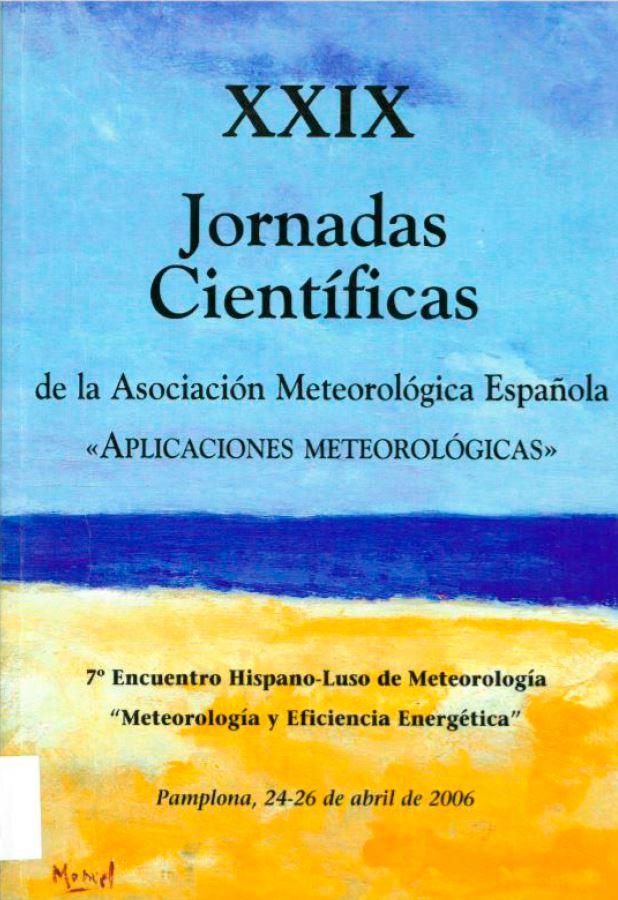EL INDICE UV SOBRE PLANOS INCLINADOS
Resumen
En 1995 la International Commission on NonIonizing Radiation Protection (ICNIRP) en colaboración con la World Health Organizationb (WHO), la World Meteorological Organization (WMO) y el United Nations Environment Programme (UNEP) elaboraron una serie de recomendaciones redefiniendo el Índice de radiación ultravioleta (UV Index) (1). De acuerdo con estas directrices la WMO (2) recomienda que el Índice UV deba estar definido como un parámetro físico promediado biológicamente utilizando el espectro de acción definido por la CIE (3, 4). La radiación UV ponderada con esta curva que representa la respuesta de la piel humana al eritema o quemadura solar se denomina radiación UV eritemática (UVER) o eritemáticamente activa.Citas
ICNIRP (International Commission on NonIonizing Radiation Protection). 1995. Global Solar UV Index. WHO/WMO/INCIRP recommendation, INCIRP publication 1/95, Oberschleissheim, Germany.
WMO (World Meteorological Organization). 1998. Report of the WMO-WHO Meeting of expert on Standardization of UV indices and their dissemination to the public”. WMO Global Atmosphere Watch No. 127, WMO/TD No. 921, Geneva. 3. McKinley A.F. and Diffey B.L. 1987. A reference spectrum for ultraviolet induced erythema in human skin. CIE Journal 6, 17-22.
ISO 17166 CIE S 007/E. 2000. Erythema reference action spectrum and standard erythema dose. CIE Standard. 4 p. CIE Publications, Vienna.
McKenzie, R.L., Paulin K.J. and Kotkamp M. 1997. Erythemal UV irradiances at Lauder, New Zealand: relationships between horizontal and normal incidence. Photochem. Photobiol. 66, 683689.
Webb A., Weihs P. and Blumthaler M. 1999. Spectral UV Irradiance on Vertical Surfaces: A Case Study. Photochem. Photobiol. 69, 464-470.
Mech M. and Koepke P. 2004. Model for UV irradiance on arbitrarily oriented surfaces. Theo. Appl. Climatol. 77, 151-158.
Parisi A.V. and Kimlin M.G. 1999. Horizontal and sun-normal spectral biologically effective ultraviolet irradiances. J. Photochem. Photobiol. B: Biology 53, 70-74.
Weihs P. 2002. Influence of ground reflectivity and topography on erythemal UV radiation on inclined palnes. Int. J. Biometeorol. 46, 95-104.
Hartley, L.E., Martínez-Lozano J.A., Utrillas M.P., Tena F. and Pedrós R. 1999 The optimisation of the angle of inclination of a solar collector to
maximise the incident solar radiation. Renew. Energy 17, 291-309.
Dichter, B.K., Beaubien A.F. and Beaubien D.J. 1993. Development and characterization of a new solar ultraviolet-B irradiance detector. J. Atmos. Ocean. Technol. 10, 337-344.
Leszczynski, K., Jokela K., Ylianttila L., Visuri R. and Blumthaler M. 1998. Erythemally weighted radiometers in solar UV monitoring: results from the WMO/STUK intercomparison. Photochem. Photobiol. 67, 212-221.
Labajo, A., Cuevas E. and de la Morena B. (eds.). 2004. The first Iberian UV -VIS instruments intercomparison. Ministerio Medio Ambiente. Madrid.
WHO. (World Health Organization). 2001. Report of the LAP/COST/WMO Intercomparison of erythemal radiometers. W.M.O. Global Atmosphere Watch. No 141 TD 1051. Geneva. WHO TD No. 1051, Geneva.
artínez-Lozano, J.A., M.J. Marín, F. Tena y M.P. Utrillas. Diseño, instalación y puesta a punto de una red de medida de la radiación solar UVB en la Comunidad Valenciana. Memoria Final. Conselleria de Medi Ambient de la Generalitat Valenciana, 2002a.
Martínez -Lozano, J.A. and 16 co-authors , UV Index experimental values during the years 2000 and 2001 from the Spanish broad band UV -B radiometric network. Photochem. Photobiol., 76, 281-287, 2002b.

